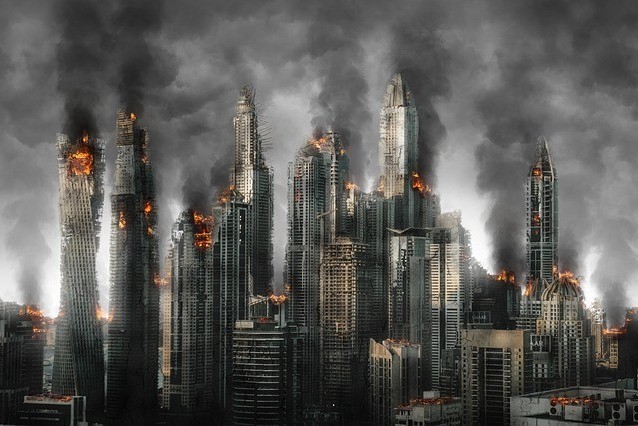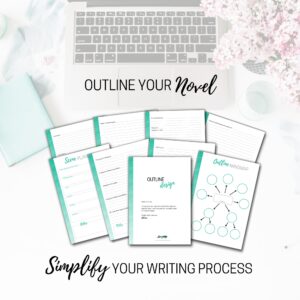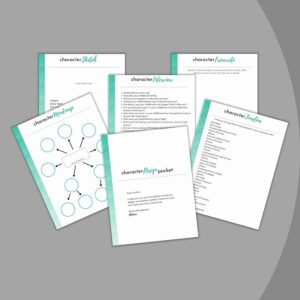
Conflict in Fiction
In life, we generally try to avoid conflict. We tend to avoid confrontation and contention in hopes of finding peace and tranquility. We work hard to avoid problems at home or in the workplace. In real life, conflict is negative.
When we’re writing fiction, the absence of conflict is negative. Novels may appear to be like real life, but in reality are nothing like real life. No one could actually go through the events in a novel without having a nervous breakdown.
A novel must have conflict. Lots of it. That’s what keeps readers engaged and makes them want to read more. Without conflict, there simply is no story. As authors, we must create compelling, realistic conflict.
That doesn’t mean there has to be death threats, car accidents, or dueling men in every scene, or even in every story. Conflict isn’t necessarily two people at each other’s throats, though it could be, it is denying the character his or her goals.
See my post on conflict here.
Types of Conflict
Conflict can be classified in the following categories:
1. Man vs. Man
2. Man vs. Self
3. Man vs. Society
4. Man vs. Fate/God/Nature
Man vs. man is when the antagonist is another person. The main character, or protagonist, is trying to obtain his goal but another person stands in his way, preventing him from his goal. In a romance, this might be another love interest or, perhaps, an old boyfriend or girlfriend. The point is, it’s a person standing in the way.
Man vs. self includes stories when the protagonist fights against himself and he stands in his own way of accomplishing his goal. Perhaps, his goal may be to become a heart surgeon but his fear that he’ll never be smart enough to get through medical school paralyzes him and prevents him from becoming a surgeon. Self-doubt can be a strong adversary and makes for dynamic stories. The inner fears and beliefs stand in the way of the character obtaining his goal.
Man vs. society is when the protagonist fights against the rules or laws of society to obtain his goal. A woman may want to marry a man that her society forbids her to marry. She must then struggle against society in order to reach her goal of marrying the man. The story would be about how the woman fights against her society/culture to finally marry the man she wants or learns that she’d rather be part of her society than marry that man. However you write the story, it is societal or cultural beliefs that stand in the way of the character obtaining her goal.
Man vs. fate/God/nature includes stories when the protagonist fights against elements out of his control. A man who wants to reunite with his family after an argument but runs into a hurricane, must fight against the hurricane in order to reach his goal: his family. Natural disasters or other unexplained difficulties placed in the way of the protagonist would be classified as man vs. fate/God/nature.
Why Conflict is Important
If Primrose Everdeen had never been chosen as a tribute, we wouldn’t have The Hunger Games. And what if being a tribute only meant Prim had to cut her hair? That might create a little conflict, but would Katniss have volunteered to take her place? Probably not. And, really, who cares if she had to cut her hair? That isn’t going to make people want to read that story. It was Katniss volunteering to fight to the death for her sister. That’s what absorbed readers and had us turning page after page to find out what happens.
What if a woman is interested in a man and he’s interested in her? They go on a perfect date where everything turns out great. After the date, they decide they both like each other, they fall in love, and get married. The end.
Who wants to read that?
No one.
We want to read about a man and a woman who can’t seem to get together. Maybe they are from different cultures or religions. Maybe they work in the same office and office romances aren’t allowed. Or maybe when they first meet they can’t stand each other. Or, perhaps, the woman was burned so badly by her last romance that she doesn’t trust anyone.
Something must stand in the way of their romance, otherwise there is no reason anyone will read it. No one wants to read a boring story of two people getting together without any obstacles (we want that in real life, but not in the novels we read).
Conflict is Gas
In order to make a car go anywhere it must have gas. To make a story go anywhere, it must have conflict. Conflict is the gas. It makes the story run. It fuels the story.
A word of caution: don’t overload the story with conflict. There is a balance between creating enough conflict to make the story compelling and too much conflict that fatigues a reader. It’s your job as the author to craft that balance.
Conflict should also increase in intensity as we move toward the climax. If the greatest conflict plays out before the middle of the book, readers will stop reading. Each conflict should build up and push the story toward the end so readers will become more and more invested in the outcome of your novel.
Conflict Should Be Organic
If you’re writing a genre romance and you’ve run out of ideas to keep the hero and heroine apart, don’t suddenly have an alien invasion where the heroine is kidnapped. Don’t create conflict that makes no sense because that makes readers stop reading. The conflict should arise naturally from the story and the characters.
As you think about your story, try writing down some conflicts that could happen. Expound on those conflicts to see if you can think of more interesting, unexpected conflicts. Just make sure that the conflict you create makes sense and is an outgrowth of the story.
A Few More Thoughts
Compelling stories include both internal and external conflicts. A heroine that is struggling to pay her rent (external) and is in danger of losing her job (external) while also battling her crippling self-doubt (internal), will make a much more complex character and, in turn, will make the story deeper and more intriguing.
You aren’t limited to only one type of conflict, but whichever conflict, or combination of conflicts, you choose to use make sure they are not only realistic, but that they are organic to the story.
Understanding the different types of conflict and using them in your story will help you write a story that readers will want to read.
And your story won’t run out of gas.
Have you read a book that has the right balance of conflict? Have you read one that didn’t?
***Have you received my FREE course: Become an Idea Factory? You can click here to learn more about it. It’s a 7-day course delivered right to your inbox that helps you learn how to generate ideas. I know these techniques work because I use them! Find out more here.
***Do you need help organizing your ideas for your novel? I have developed an Outline Design Packet to help other writers organize their thoughts and arrange scenes so they don’t have to interrupt their writing time. This is what I use to outline my books.

***If you need some help creating your characters, download my free Character Design Packet here. It will help you create compelling, unforgettable characters that will make your story come alive.

***Need help writing your first chapter? Check out my course: Writing a Fantastic First Chapter.
In this course, Writing a Fantastic First Chapter, you will learn what components you need to include in your first chapter to hook readers. With examples and assignments, you will put into practice what you learn and you can ask questions all along the way. A first chapter checklist, a character sheet, and a character interview are all included as downloads.
Don’t try to write a first chapter in the dark. This course will shine the light on what elements you need to help you navigate writing the all-important first chapter, so you can win over readers.
***Do you already have a manuscript? If you can’t afford an editor, you might be interested in Pro Writing Aid Writing Software. This writing software helps you improve your writing to be the best it can be. It’s like having your own private editor for a fraction of the price. You can try it for free for 2 weeks. You can click here to learn more about it.
***This post may contain affiliate links which may compensate me with no additional cost to you.





